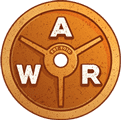When creating your weight training workout routine, you tend to focus most on stuff like which muscle groups you’ll train on which days, what exercises you’ll do in each workout, how many sets and reps you’ll do for each, and so on.
But, there’s often one very obvious question that goes overlooked…
How much weight should you lift for each exercise?
This question is typically a lot more common among beginners, but it’s really a question that can arise at every experience level the first time you do an exercise you’ve never done before or just haven’t done in a long time.
You’re basically left wondering what weight will be too heavy, what weight will be too light, and exactly what weight will be perfect for you to use on that specific exercise.
Well, here’s the super simple 3 step process for figuring out exactly how much weight to lift for each exercise…
Step 1: Figure out how many reps you should do for that exercise.
To start, you need to figure out how many reps you should be doing for that exercise. The amount of reps you are aiming to do will basically serve as a guide to your ideal weight to lift.
There’s 2 ways to figure this out:
- Look at your weight training program.
Yup, just that easy. If you’re using a pre-made weight training program, all you need to do is look at how many reps it prescribes for each set of this exercise. So, go look. - Find the rep range that is most ideal for you goal.
If you’ve created your own weight training program, then you just need to figure out how many reps per set is most ideal for your specific goal. I explain this right here: How Many Reps Per Set? Once you’ve determined the rep range that is right for you, come right back here.
Step 2: Know your sweet spot.
The second step in figuring out how much weight you should lift for each exercise is to know what that “ideal weight” sweet spot will feel like so you can easily spot it when you reach it.
Let me explain…
Unless your specific weight training program says otherwise, your goal is to use a weight that is light enough for you to do the number of reps you are trying to do per set for that exercise, but still heavy enough so that you couldn’t do additional reps beyond that point.
For example, let’s pretend that you’re trying to do 3 sets of 8 reps for an exercise.
The weight you use needs to be light enough so you can actually get to about 8 reps in all 3 of your sets (without reaching failure), but still heavy enough so that you couldn’t lift that weight many more times than the 8 reps you are setting out to do.
Meaning, if you couldn’t reach 8 reps or at least get to within 1 or 2 reps shy of 8 in all 3 of your sets in this example, the weight is probably too heavy.
However, if you did 8 reps in all of your sets but could have kept going and probably done more than 10, then the weight in this example is probably too light.
The middle ground between those two points… that’s the sweet spot you’re aiming for.
Now about how to find it…
Step 3: Guess and adjust.
Alright, so now you know how many reps you should be doing for each set of this exercise, and you also know what your “ideal weight” for this exercise should feel like.
Now it’s just a matter of taking a really good guess and then adjusting based on what happens.
So, literally pick up a weight and lift it.
Specifically, choose a weight that you know will be a little too light and easy for you and then lift it for your desired amount of reps (and use good form, obviously).
Then, based on how that set felt, just gradually adjust until you end up in your sweet spot.
Since the weight you’ve started with is purposely a little too light, just slowly increase it in the smallest increment possible every time you do this exercise until you reach a weight that is just right (not too heavy, not too light) for you for the rep range you are aiming to do.
When you find that, you’ve found how much weight you should lift for that exercise. Use it.
Bonus Step: Progression
As you gradually begin to build muscle and get stronger, you’ll soon notice that your “sweet spot” weight for this exercise is now getting a little too light and easy again.
Using the same example from before (3 sets of 8 reps), you may feel like you could now probably do 3 sets of 10 reps with this weight if you wanted to.
This is good… and expected. It means your body is improving, and this previously ideal weight is no longer ideal for you any more.
Meaning, progression is taking place. Your job is to let it happen. To do this, increase the weight you’ve been using for this exercise by the smallest increment possible and lift it for your prescribed amount of sets and reps from this point on.
Eventually, this new weight will again become too light and easy for you, at which point it will again be time to progress. And once again, let it happen.
This process is known as progressive overload, and it is the absolute #1 key to getting the results you want from your weight training routine. Be sure to let it happen.
Now Start Lifting
And that’s it. That’s how to figure out how much weight you should be lifting for each exercise. Once you find it, use it. And once that weight becomes too easy for you, increase it.

